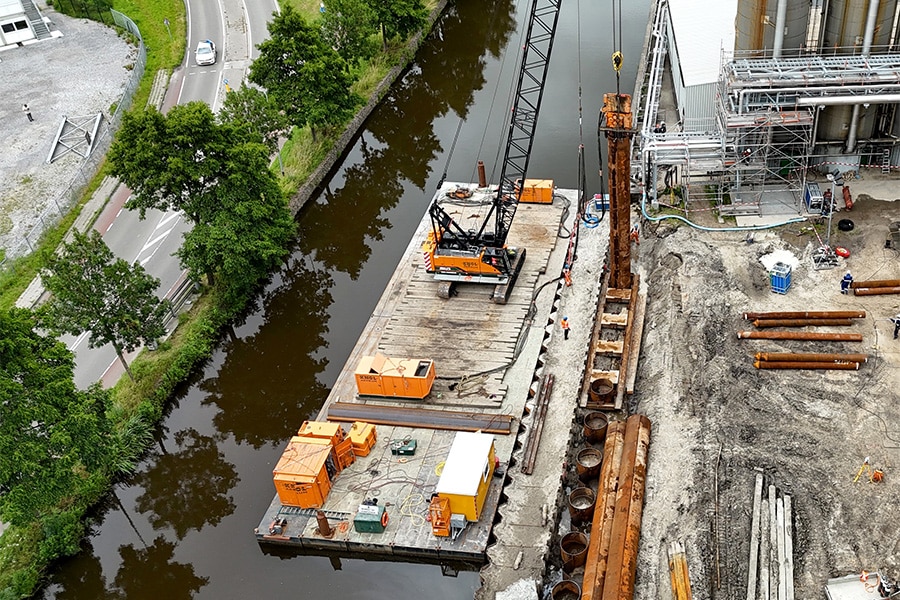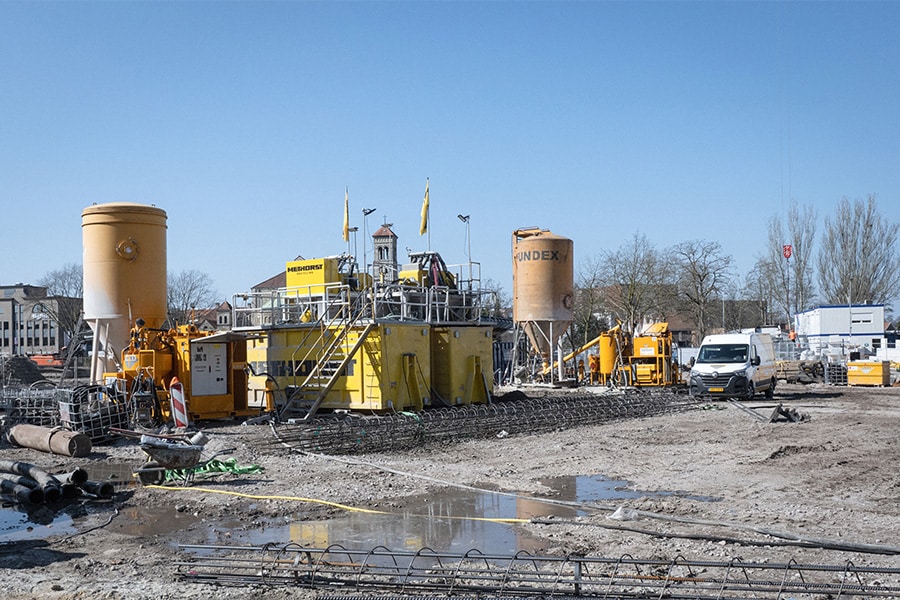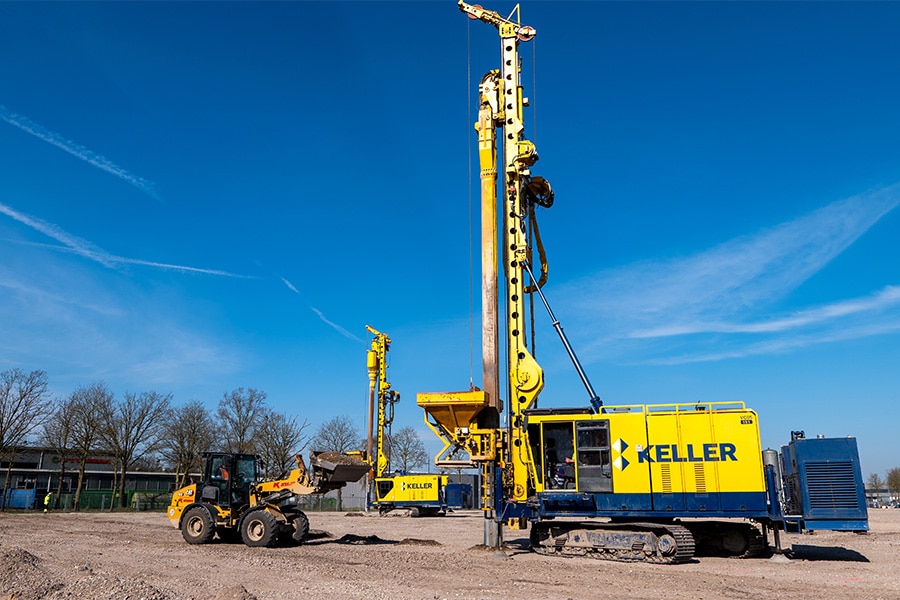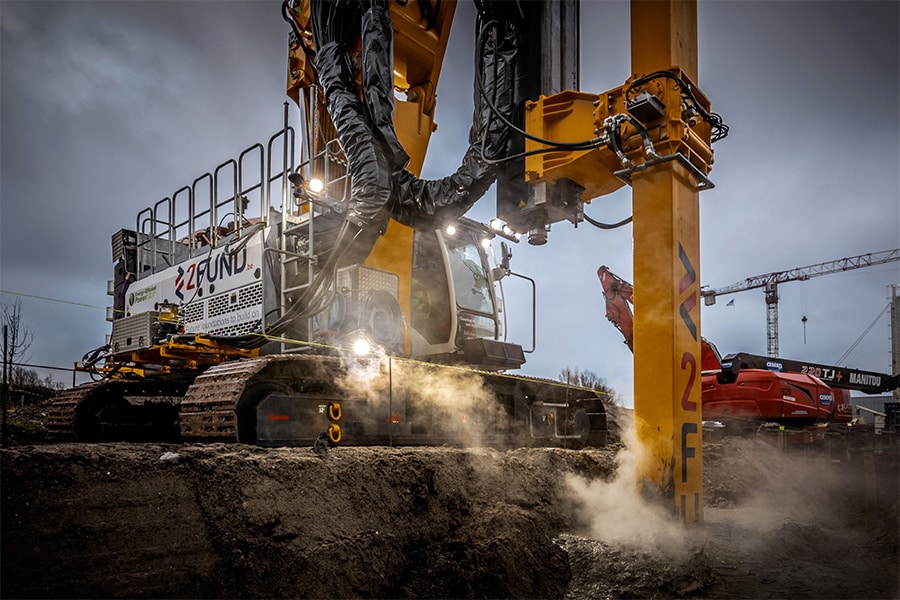
Sustainable sheet piles key to success
For the dike reinforcement Gorinchem-Waardenburg, steel sheet pile walls are being used on a large scale to protect the dike against the failure mechanisms macro stability and piping. The Graaf Reinaldalliantie has chosen to reinforce more than 6 km of the 23 km of dike reinforcement with steel sheet pile walls. In this article, Roel Bijlard, Technical Sales Engineer ArcelorMittal Projects, explains more about this process and its impact on the sustainability of the project.
Steel sheet piles support the soil dike under normative loads. Especially at locations with limited surrounding space, a sheet pile wall is the ideal reinforcement of the dike. Especially interesting are the locations where both stability and piping are normative. There, a single sheet pile wall construction can tackle both reinforcement tasks. The large quantity of sheet piles needed in Gorinchem-Waardenburg affects the sustainability of the project. The ArcelorMittal Group is fully committed to the Paris Climate Agreement by reducing CO2emissions by 35% by 2030 and completely emission-free steel production by 2050. We reduce the environmental impact of delivered steel sheet piles by focusing on three areas: Recycling, Reduce & Reuse.
Recycling
The sheet piles are delivered from the plant in Luxembourg, where the steel is produced in an electric arc furnace. An electric arc furnace uses one hundred percent steel scrap for production, no more iron ore is used. This eliminates the extraction of primary raw materials from nature and makes it the most sustainable method of steel production. Also, less waste products are released compared to the blast furnace process, where carbon dioxide emissions are about a factor of 5 higher. Per ton of steel sheet piling, 430 kg of C02 free. This reduction in emissions is demonstrated through the Environment Product Declaration (EPD) EcoSheetPiles™, prepared specifically for the Dutch market. Also currently available is the new EPD EcoSheetPiles™ Plus, based on one hundred percent green power. This will reduce the CO2-emissions in the production process are further reduced to 340 kg CO2 per ton. For hot rolled sheet piles, ArcelorMittal has a unique position among sheet pile producers because of its short distance to the plant and sustainable production process.
The dike reinforcement Gorinchem-Waardenburg has a design life of one hundred years. Because the corrosion of sheet piles in a dike body is minimal, the sheet piles will be removable from the dike even after one hundred years. Some of the removed sheet piles may be reused in other projects. Anything that cannot be reused will be fully recycled, going back into the electric arc furnace as raw material. The circle from scrap - to steel sheet piling - to scrap is now complete and will be repeated in the next project.

Reduce: reduce the required use of materials
However, the biggest savings in emissions, and thus increasing sustainability, comes not from the production process, but from reducing the amount of material required. The results of the reports from the 2018 sheet piling test in Eemdijk, show that it is possible to design sheet piles shorter and lighter than has been done so far in dike reinforcements. In this project, the sheet piles will be delivered with steel grade S430 GP, achieving the same required strength with a lighter type of sheet piling.
Reuse: excellent reusability
Steel sheet piles are excellent reusable for temporary applications, such as in temporary construction pits. However, used sheet pile walls are not often applied in a definitive work, such as a dike reinforcement. The Count Reinaldalliantie has chosen for Gorinchem-Waardenburg to apply used sheet-pile walls at the locations where the failure mechanism piping plays a role. To protect the dike against piping, the length of the seepage path must be extended so that the phenomenon can no longer occur. A used sheet pile wall can perform this function just as well as a newly produced sheet pile wall. The big difference is that the entire emissions from the production phase do not have to be included for the used sheet pile; they are already partially included in the previous temporary applications.



